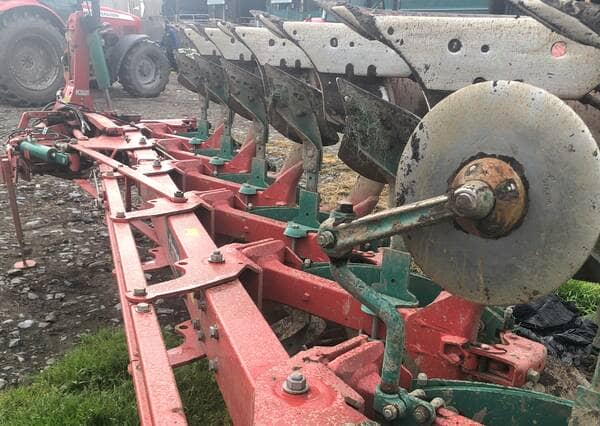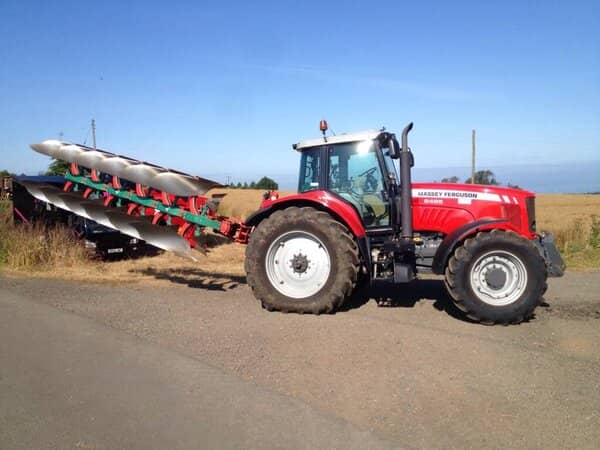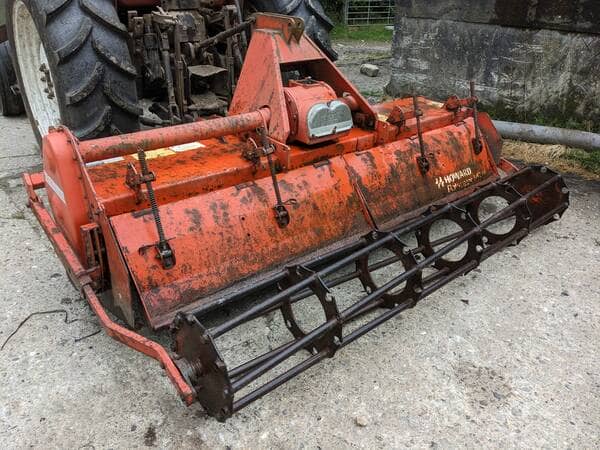Ploughing is a fundamental agricultural practice, and understanding the components of a plough is crucial for effective operation.
Two such essential components are the disc coulters and skim coulters. This article aims to explain their functions, the importance of their correct settings, and their use in different ploughing scenarios.
Disc Coulters: An Overview
A disc coulter, or simply a coulter, is a cutting tool attached to a plough. It cuts through the soil and crop residue before the ploughshare and mouldboard turn the soil over. There are several types of coulters, including knife or straight coulters, disc coulters, wave coulters, and serrated disc coulters.
The disc coulter is particularly useful when ploughing through heavy soils or large amounts of crop residue. Its circular, rotating design helps to prevent soil and residue build-up, thus minimizing the risk of clogging.
Skim Coulters: Their Role in Ploughing
A skim coulter or skimmer is a small mouldboard fitted in front of the main mouldboard on a plough. It cuts and inverts a thin slice of soil that covers the furrow slice turned over by the main mouldboard.
Skimmers play a crucial role in burying crop residue, controlling weed growth, and preventing soil erosion.
They are typically classified into standard, large, and double skimmers, depending on the amount of crop residue they can handle.
Correct Setting of Disc Coulters and Skimmers
Providing the soil is ready for ploughing and isn’t too wet or too dry, the following settings will help your plough work at its best.
Disc Coulter Settings:
The disc coulter should be set 1 to 2 cm wider than the furrow width and at a depth of 4 to 10cm into the soil, this allows it to cut through the soil and residue ahead of the ploughshare.
The disc is set slightly wider than the furrow leg so that the furrow can be lifted cleanly by the mouldboard and turned, leaving a clean furrow side wall.
The disc should be vertical, and have a space of 1cm between the skimmer point and the side of the disc.

Skimmer Settings:
The skimmer should cut a slice of soil and top layer of trash that can be completely covered by the furrow slice turned over by the main mouldboard. Hence, it generally works at a much shallower depth (2-5cm) than the main ploughshare and mouldboard.
The skimmer should follow the line of the ploughing and cut a slice of soil from the top of the furrow slice turned over by the main mouldboard.
If the skimmer is set too shallow, crop residue might remain on the surface, which could interfere with the growth of the new crop.
Disc Coulters and Skimmers in Different Scenarios
Let’s consider the role of disc coulters and skimmers in some specific ploughing scenarios:
Ploughing grassland which hasn’t been burned off with a herbicide:
Both disc coulters and skimmers are beneficial here. The disc coulters cut through the grass and roots, facilitating soil turning, while the skimmers bury the grass and roots under the turned soil.
Ploughing grass that has been burned off and rotovated:
Here, the need for disc coulters and skimmers is less pronounced. The rotavation process would have already broken up the grass and mixed it into the soil. However, if the rotavation wasn’t thorough or if the soil is particularly heavy, disc coulters and/or skimmers might still be beneficial.
Ploughing cereal stubble ground:
Disc coulters can be useful for cutting through stubble, preventing clogging of the plough. Skimmers help bury the stubble, accelerating its decomposition and enriching the soil.
Ploughing bare soil after potatoes:
Disc coulters might not be necessary here, as there is no crop residue to cut through.
Skimmers could be beneficial for improving the soil structure and helping to bury any remaining potato residues, but their use would depend on the specific condition of the field.
Remember, these are general guidelines. The specific conditions of the field, the type of soil, and the crop to be planted will all play a part in determining the best approach.
Summary
Correct understanding and adjustment of plough components like disc coulters and skimmers is crucial for efficient ploughing.
By considering the type of soil, previous crop residues, and the crop to be planted, you can tailor the settings of these components to suit your specific needs. As always, start with the manufacturer’s guidelines, and don’t be afraid to make adjustments based on the actual results in the field. Happy ploughing!
further reading:
https://www.farmersjournal.ie/plough-settings-get-the-basics-right-256755



